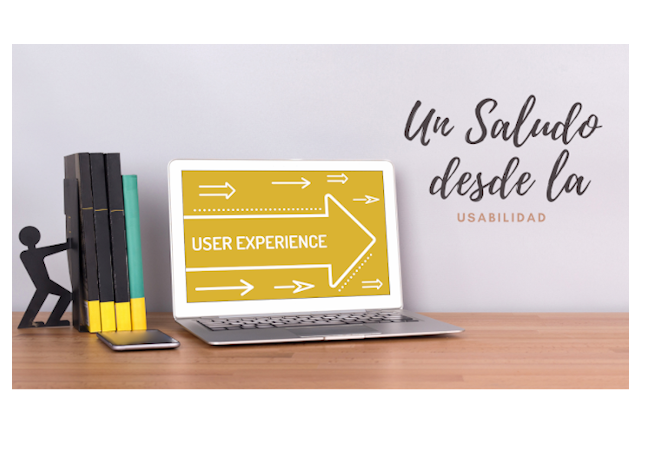
We are users. We are all and always users in the world; in the material, where 100% of our history has developed, and in the digital that, despite its -relatively- recent arrival, has marked a before and after for us as a civilization.
Our routines are constantly related to the use of different tools, objects and services, and these naturally depend on the characteristics with which they were designed and equipped to fully fulfill their purpose. Successful progress - and with the least possible effort - through different stages of our day is an inevitable
consequence of one or several minds that once thought of making the clock also an alarm clock, that the coffee maker works with a button and that the house can be secured with a key when leaving.
We are users and we don't realize it. Many times we are satisfied users and other times frustrated when we do not see the power button or when the number of steps and accessories to assemble a piece of furniture exceed our patience. Sound familiar?
Without thinking about it, we constantly become part of those we work for. We sit at our desk thinking that we are creating virtual spaces of information and interaction for an audience that “is not us” and that has totally different needs in each project, when in reality we are all looking for one thing: That it
works and in every sense of the word.
If a good design and engineering process is required to make products that are easier to approach in the tangible world, it is valid to say that we need an equal or sometimes more exhaustive process when we need to approach a product and a digital experience.
Renowned academic, researcher and father of the term “Usability”, Donald A. Norman, says that “A good design is harder to detect than a bad one, because it fits so well to our needs that it becomes invisible.” The vast majority of our objects obey that premise, but we must ask ourselves: Is it the same with the products we design, develop and test? Are we really concerned about the performance of our websites from all its phases? Could a user not feel intimidated or, worse yet, frustrated within our products?
From here we will divide the path into four: The user, Usability, The user experience and The reality of creation.
The user:
It's as simple as saying that someone who drives a car is a driver; it's also true that a human being is needed as a reference for creating a tool, an object or a service. Is it possible to make a product for someone about whom we know practically nothing?
Many of us could answer “Yes”, but sticking to a single input, which is the client’s requirement, is not enough for our result to adapt to the user’s needs.
One of the pillars of the website design process is the minimum knowledge of the characteristics, education level, expectations and tastes of our users. In a process where this is not included, we resort to taking past references or ideas that we apply by default to our designs. The surprise? It doesn't always turn out how we thought it would.
The fascinating thing about taking on the task of interacting and working with the target users of a product is that at the end of the day they change our way of thinking. And I dare say that our hopes of having made the most intuitive product in the world are the ones that first dissipate when the user asks in the video call “And where
do I go from here?” Let's not worry. This task does not reveal a failure, on the contrary, it opens the doors to a future with a greater probability of success.
There are many ways to obtain information, and of various types, about one or many people. From virtual interviews to face-to-face activities, each method yields a different type of results. Personally, I consider it essential and very necessary to apply an interview in the early stages of the project. In addition to being one of my preferred methods because it allows me to get closer to the user, I also find broader, more detailed and, in some cases, more honest opinions about usage habits or expectations of a product. Card sorting, the design of wireframes by users and usability tests with a prototype of the product are also excellent
research methods for later stages of the project.
Dramatic moment of the reading: We are detectives. Or at least, let's imagine that we are to make this exercise more interesting. Don't we seek to get into people's minds? With each test we learn your mental structure, the details of your reasoning and your ideas for improvement.
To conclude the first part of this article, it is necessary to reiterate that the user, as the one who gives meaning to the product, must be seen as the raw material of production; the first source of information with which we can begin to shape the initial design schemes. We also know that some tasks that arise in the company related to quick orders do not give rise to user research, however, the principles or general behavior patterns that have been learned from other exercises are useful for these cases.
